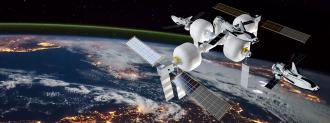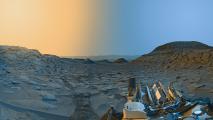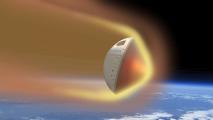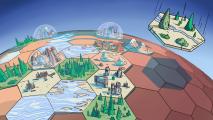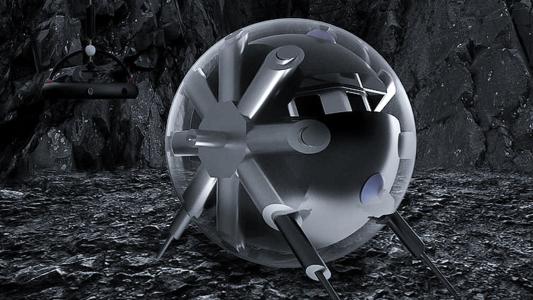Space is a hostile environment — and not just for astronauts.
After 20 years in low-Earth orbit, the International Space Station (ISS) is showing signs of wear and tear — in the last year alone, a toilet, oven, and oxygen supply system have all stopped working, and two cracks in the oldest ISS module were caught leaking air.
While the ISS is cleared for use until at least 2028, NASA is already starting to consider the next generation of space stations — and an inflatable space habitat, made of fabric, is a top contender.
SNC’s Inflatable Space Habitat
In 2016, NASA awarded contracts to several companies to build ground prototypes of space habitats that could support humans in space, the moon, and beyond.
One of those companies, the Sierra Nevada Corporation (SNC), has designed an inflatable space habitat made of a Kevlar-like fabric.
Dubbed the LIFE Habitat, the module is 27 feet long, 27 feet wide, and three stories tall when fully inflated. That’s enough room for four astronauts, plus their science equipment, a medical center, and even an in-development space garden.
The big allure of the inflatable space habitat is that a module can be folded up and sent into space aboard a conventional rocket with just one launch — it took more than 40 missions to assemble the ISS, one piece at a time.
In 2019, SNC delivered a full-sized ground prototype of the LIFE Habitat to NASA’s Johnson Space Center. After living in the habitat for three days and going through a simulated mission, crew members gave the inflatable space habitat a positive evaluation.
Now, one of the modules is heading to Kennedy Space Center for both short- and long-term habitation testing.
If that goes well, SNC hopes to receive NASA certification for the design, which would clear the way for its use during future missions — and the company is already thinking bigger than just a single habitat in space.
“The next phase is to create a completely holistic space infrastructure,” Janet Kavandi, SNC’s senior vice president for space systems, told Florida Today.
SNC recently unveiled renderings of that proposed system, which features several connected habitats capable of docking with the company’s own Dream Chaser spaceplanes and cargo modules.
The Next Space Station
NASA’s interest in an inflatable space habitat didn’t start with SNC. The agency has been exploring the design since the 1960s, but the concern has long been durability — can the fabric modules withstand the harsh conditions of space?
In 2016, NASA decided to take a chance on the design, connecting a prototype inflatable module built by Bigelow Aerospace directly to the ISS.
That habitat, the Bigelow Expandable Activity Module (BEAM), has given NASA a relatively low-risk way to test out an inflatable habitat — if something went wrong with it, astronauts could just retreat to the other parts of the ISS.
So far, NASA seems pleased with BEAM, announcing in 2019 that it would keep the module attached through 2028 — it was initially supposed to be jettisoned in 2020 — making a solid case that the space station of the future just might be inflatable.
We’d love to hear from you! If you have a comment about this article or if you have a tip for a future Freethink story, please email us at tips@freethink.com.
